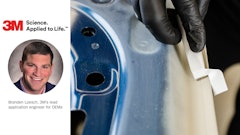
By Mike Davey
Arlington, Virginia — August 1, 2016 — Earlier this year, the US-based Insurance Institute for Highway Safety (IIHS) published results of the organization’s first-ever vehicle headlight evaluations. The tests seemed to show that most vehicles had underperforming headlights.
However, the cause of the poor ratings was not addressed in the IIHS report. A new analysis of the data seems to indicate that scores scores tended to be better when headlights were aimed properly and worse when the headlights were aimed either too high or too low.
The original test results from the IIHS showed the Toyota Prius as the only midsize car out of the 31 vehicles evaluated to earn a good rating.The best available headlights on 11 cars earned an acceptable rating, while nine only reach a marginal rating. According to a statement from the IIHS, 10 of the vehicles can’t be purchased with anything other than poor-rated headlights.
Oddly enough, a vehicle’s sticker price didn’t seem to have much to do with how well its headlights performed in the tests. The IIHS tests showed that many of the poor-rated headlights belong to luxury vehicles.
Dr. John Bullough is the Director of Transportation and Safety Lighting Programs at Rensselaer Polytechnic Institute’s Lighting Research Center. He performed some post-hoc analyses, using the data and protocols provided by the IIHS.
Bullough published his results in as a Guest Editorial in LEUKOS, journal of the Illuminating Engineering Society of North America, published by Taylor & Francis. You can read his full article at this link.
The data analysis performed by Bullough seems to indicate that scores were better when the headlights were aimed properly. While this does seem like common sense, it calls into question some of the results of the IIHS testing. Bullough’s results indicate that the he number of systems rated as acceptable or good would have doubled if they had been correctly aimed.
Long story short, you can help your customers avoid further collisions by making sure their headlights are properly aimed.
You can check out a video on the original IIHS report in the player below.






















